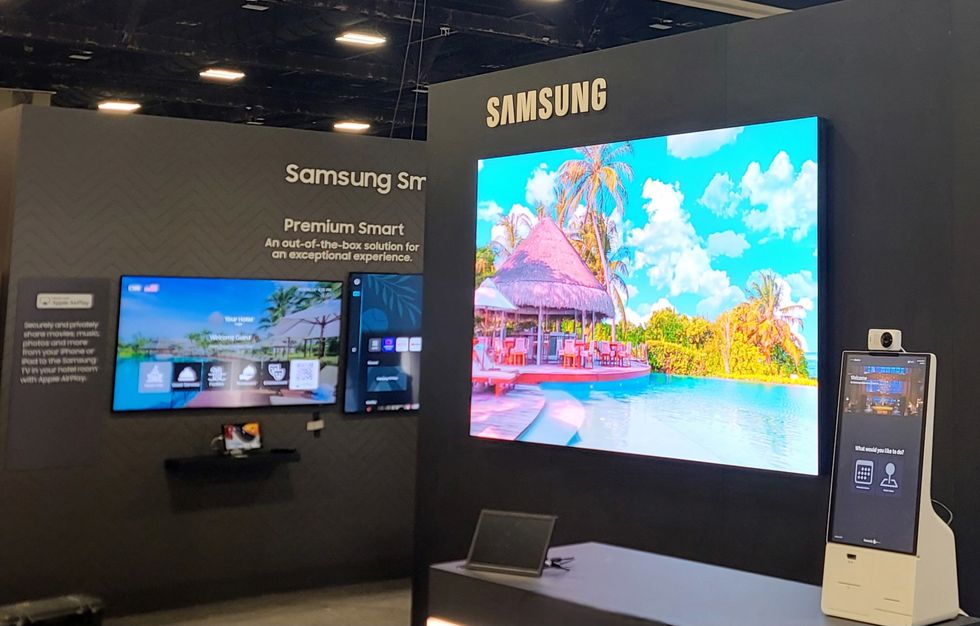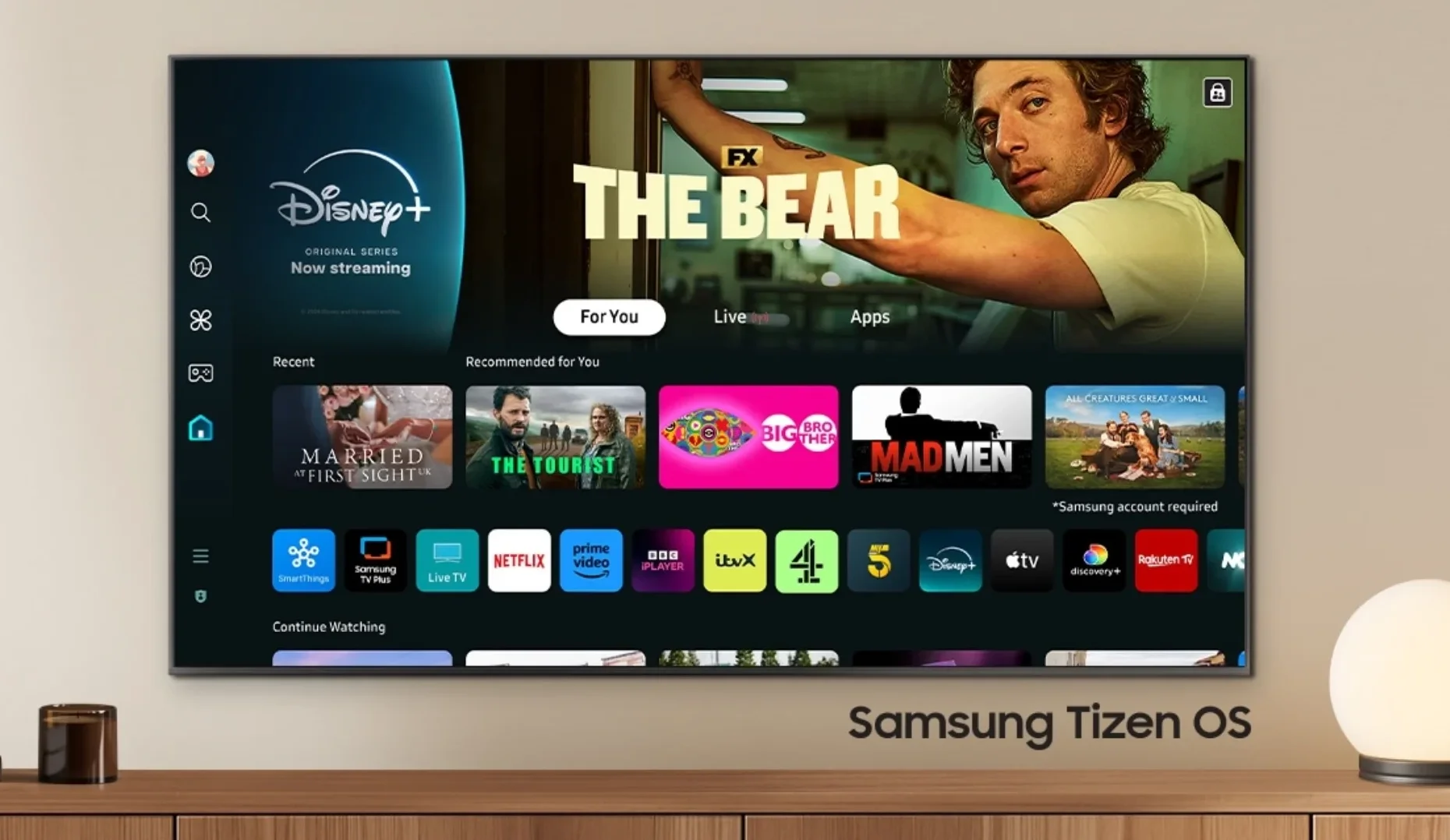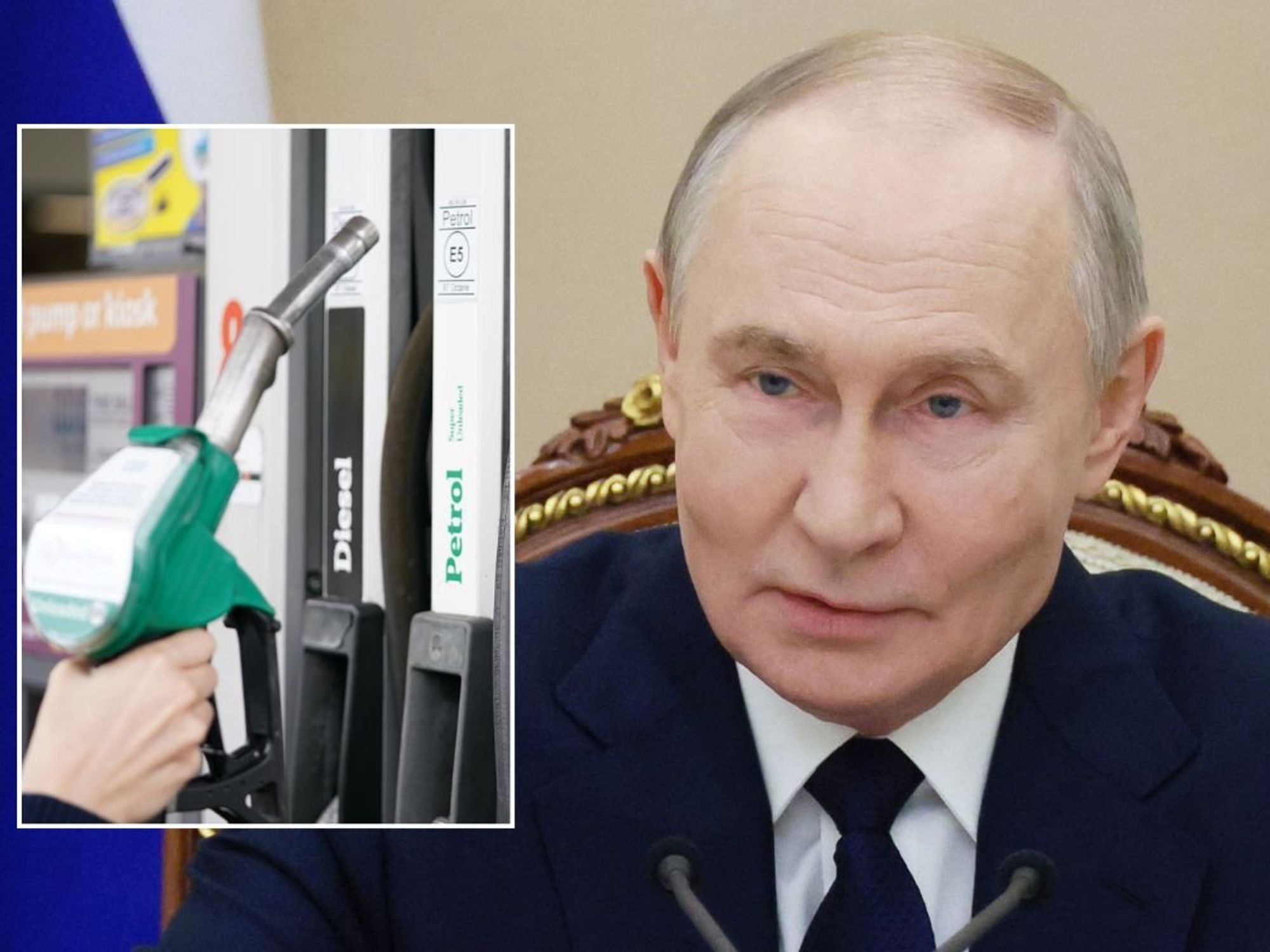Your Samsung TV will NEVER look the same again! First-of-its-kind update confirmed for millions

Samsung will start with 2023 models, before rolling-out the redesigned software to more Smart TVs
- Samsung will unify the software experience across its devices
- One UI will replace the Tizen software that's always powered Samsung TVs
- It brings an all-new design and improved functionality
- Samsung executives have teased incoming AI features for TV owners
Don't Miss
Most Read
Your Samsung TV could be treated to a first-of-its-kind overhaul in the coming weeks — and chances are, it'll look completely different to what you're used to seeing on-screen.
It's all thanks to the decision by the South Korean technology firm, which has been the biggest brand worldwide in televisions for the last 18 consecutive years, to roll out its One UI software to televisions. If that sounds familiar, it's likely because One UI is already used across Samsung's popular range of smartphones and tablets, although that version is based on open-source Android code.

Samsung hopes that rolling out One UI across every product category will create a greater sense of cohesion across its portfolio and make devices easier to use for newcomers who might already own another Samsung gadget
|SAMSUNG PRESS OFFICE
Replacing Tizen OS, previously used across all Smart TV models from Samsung, with One UI is designed to offer a more cohesive experience across all of its devices.
So those with a Samsung smartphone in their pockets will immediately be familiar with the design and features of a Smart TV from the same brand.
But the shift to One UI isn't just about a lick of paint, Samsung says its free upgrade will introduce a swathe of new features to improve viewing experience and streamline navigation between live channels, on-demand catalogues, and streaming apps. Samsung has already kickstarted the process of replacing Tizen OS 8.0 with One UI across its Smart TVs released in 2023.
Critical improvements include a redesigned home screen with personalised recommendations from across streaming services, a 'Watch Later' function to queue-up shows, films and documentaries, and boosted gaming capabilities. Everything is sorted into tabs marked For You, Live, and Apps.
The new UI also introduces Samsung Daily+, a dedicated hub for applications and subscription services that aren't streaming video, like home workout app, video chat app, and remote medical service apps.
For the first time, Samsung will use your previous search history on the television — as well as your viewing history — to inform its AI-powered recommendations. Workout Tracker lets Galaxy Watch owners connect to the big screen and display real-time fitness data on-screen during at-home sessions.
And this is just the beginning, with Samsung executives hinting at new AI features, including the ability to generate never-before-seen screensavers with Artificial Intelligence, an improved Bixby voice-controlled assistant, and even the ability to transcribe calls in real-time as they're beamed from a phone to the big screen.
Notably, the update maintains compatibility with hardware powered by the existing Tizen operating system, suggesting that One UI may be an overlay rather than a complete overhaul to the underlying code.
This transition aligns Samsung's TV experience more closely with its mobile devices.
One UI has been a staple of Samsung's mobile devices since its introduction in 2018. Initially developed for smartphones, the interface has since expanded to tablets and wearables, offering a consistent software experience across the Galaxy ecosystem. For the first time, a feature called Multi Control will let you interact and manage multiple Samsung devices with a single keyboard and mouse, with the controls moving seamlessly between screens — like tablets and televisions.
Known for its clean design and user-friendly features, One UI has undergone several iterations, with each version bringing refinements and new functionalities. The decision to bring One UI to Smart TVs represents Samsung's broader strategy to create a unified software experience across all its consumer electronics.
This move aims to simplify interactions for users who own multiple Samsung devices, potentially enhancing brand loyalty and ecosystem integration.
Samsung has already tied the underlying infrastructure of its devices together with services like SmartThings, which lets you control Wi-Fi-enabled thermostats, washing machines, fridge-freezers, security cameras, and other devices from your phone, Smart TV, tablet and other gadgets.
As part of a recent collaboration with British Gas, Samsung confirmed that Britons could save money by switching to its smart home system. The update across the fleet of Samsung Smart TVs, starting with those released in 2023 and becoming the new default for upcoming 2025 hardware due to be announced in the coming months, is part of a shift to unify its software experience across all consumer devices by 2025.

The new One UI 7.0 will be compatible with Smart TVs originally powered by Tizen OS — the dedicated software developed by Samsung for its television before the switch announced this month
|SAMSUNG PRESS OFFICE
Samsung announced the strategy and the slew of new features coming to televisions at its annual Developer Conference, held in the San Jose McEnery Convention Center, California.
LATEST DEVELOPMENTS
- Update to your Sky Q box will alter 12 popular channels
- Vodafone 'secretly testing' superfast new broadband kit
- You've been using passwords all wrong
- Microsoft confirms when 'privacy nightmare' AI screenshot tool will launch
- Best VPN deals
On stage, Executive Vice President Sally Hyesoon Jeong confirmed that One UI would now encompass TVs and home appliances. The next iteration, One UI 7.0, is slated to debut with the next flagship Galaxy S smartphone range, promising a "fresh, new look" for the entire interface.
Samsung's goals for the update include a new focus on simplicity, with an "impactful, and emotive design", that's shared across all Galaxy devices, Sally Hyesoon Jeong added.










